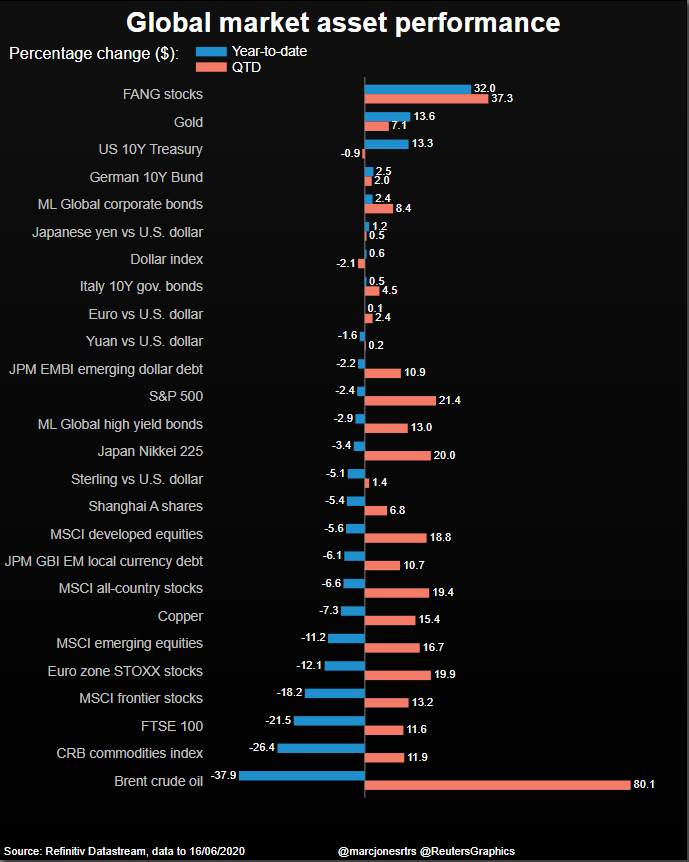Categories:
General Market Commentary
/
Precious Metals
Topics:
General Market Commentary
/
General Precious Metals
World’s ultra-wealthy go for gold amid stimulus bonanza
As stock markets roar back from the coronavirus-led rout, advisers to the world’s wealthy are urging them to hold more gold, questioning the strength of the rally and the long-term impact of global central banks’ cash splurge.
Before the covid-19 pandemic, most private banks recommended their clients hold none or just a tiny amount of gold.
Now some are channelling up to 10% of their clients’ portfolios into the yellow metal as the massive central bank stimulus reduces bond yields – making non-yielding gold more attractive – and raises the risk of inflation that would devalue other assets and currencies.
While gold prices have already risen 14% since the start of the year to $1,730 an ounce, many private bankers bet that gold – a hedge for both inflation and deflation – has further to run.
“Our view is that the weight of monetary supply, expansion, is going to ultimately be debasing to the dollar, and the Fed commitments, which (are) anchoring real rates, make the case for gold pretty sturdy,” said Lisa Shalett, Chief Investment Officer, Wealth Management at Morgan Stanley.
Nine private banks spoken to by Reuters, which collectively oversee around $6 trillion in assets for the world’s ultra-rich, said they had advised clients to increase their allocation to gold. Of them, four provided forecasts and all saw prices ending the year higher than they are now.
UBS, the world’s biggest wealth manager, said gold could hit $1,800 by year-end in its base-case scenario, driven by ultra-low interest rates and investors seeking gold to hedge their portfolios, or even touch a record high of $2,000 in the event of a second wave of novel coronavirus infections.
“With the recent equity rally, people have become more nervous. People are actively seeking out portfolio hedges that might perform well in a range of scenarios,” said Kiran Ganesh from UBS’s chief investment office.
Morgan Stanley added a 5% position to commodities including gold in all its models at the end of March.
While the bank was unlikely to advise a position above 10% in commodities like gold, Shalett said it could get there, especially if inflation picks up materially.
The boost in demand could be a self-fulfilling prophecy for the metal’s price, as any shift in allocation from bond and equity markets, estimated at up to a combined $200 trillion, has a much larger impact on the smaller gold market, estimated at less than $5 trillion.

While queries about gold have increased, very few clients had demanded a wholesale move into gold – something they would have been advised against – the bankers said, adding older clients tended to be the most concerned about inflation risks.
“That cohort is very concerned about wealth preservation. And in many ways they have a longer historic lens than some of our other clients, so they do worry about inflation,” Morgan Stanley’s Shallet said.